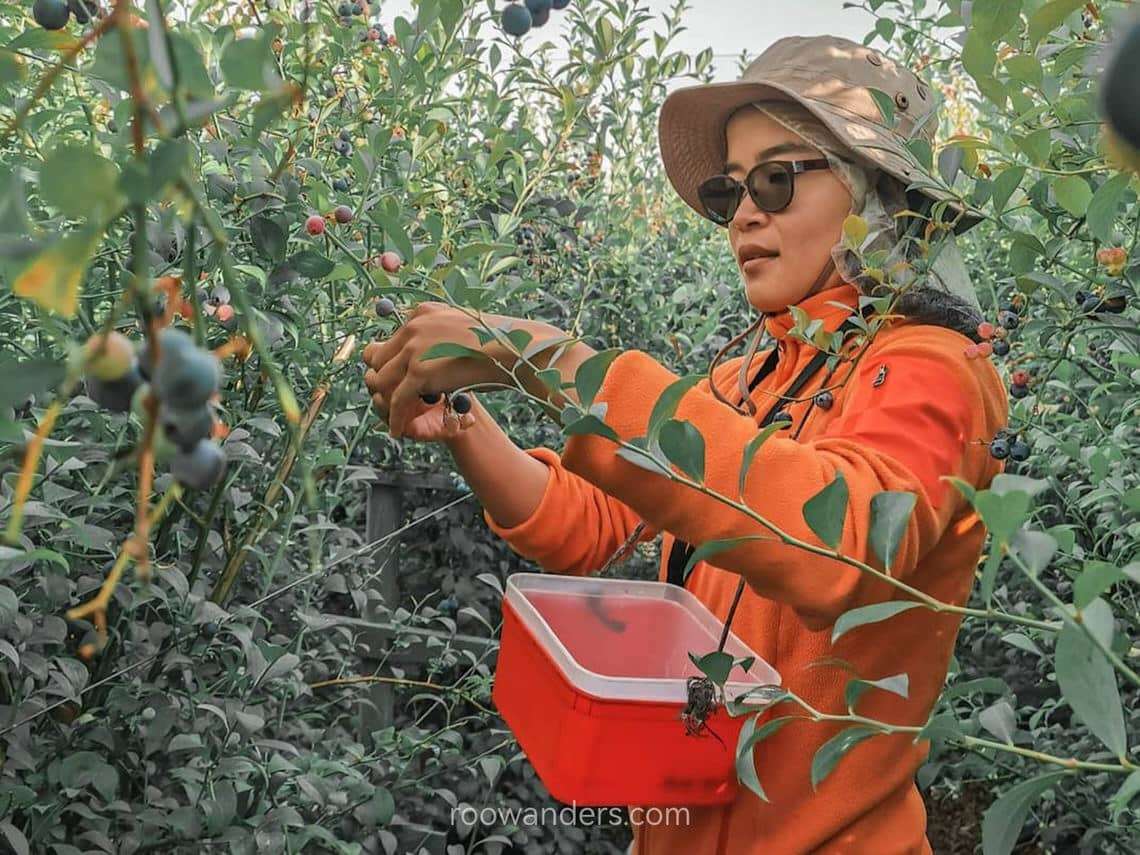
New Zealand Holiday Job #9: Blueberry Picking
Blueberries are expensive fruits in the supermarket. Like all berries, a punnet of blueberries costs way more than other fruits of the same weight. They are like gold bars in fruit sense.
Blueberries are high in antioxidants, have no apparent side effects from over-eating, and are delicious. Which makes working as a blueberry picker so enticing! Heehee…
Recap of my Working Holiday Adventure: With a month done travelling on the North Island, it was time for us to stop moving and start working! Luck was by our side. Blueberry picking and packing were in full swing, and the kiwi season was starting. We could have our pick, literally.
Thinking of picking blueberries while on your New Zealand Working Holiday adventure? Read on to find out how you can apply for one too!
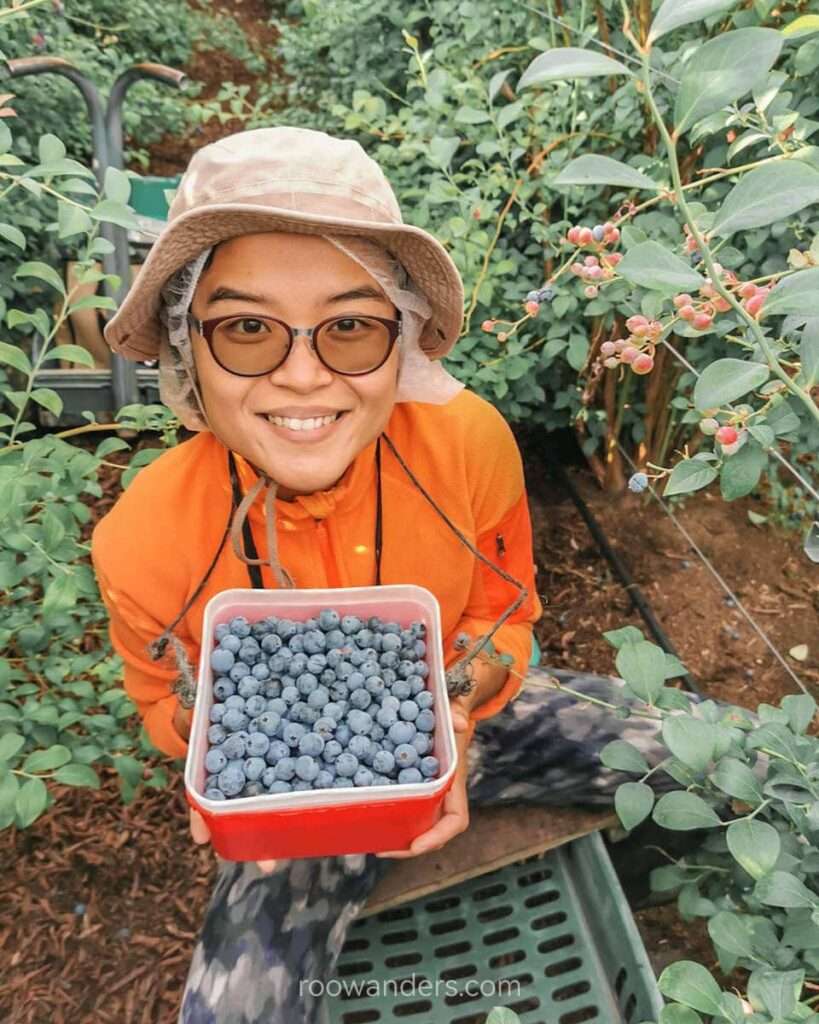
I picked blueberries in Mar 2021. This post may be updated periodically.
Blueberry Season
The berry picking and packing season begins as early as Dec and ends in May. It coincides with the end of the cherry season in the South Island – around the end of Jan or Feb – which makes it a natural progression for pickers.
The Orchards
You could easily google for blueberry orchards in New Zealand. If the orchards have an online presence, message them – Facebook pages/ Instagram pages/ their contact numbers – in advance. Better yet, get the address and walk in.
Generally, you have a higher success rate applying for a position with the big players at the beginning of the peak season. Smaller orchards tend to go for the premium pick-your-own blueberries scheme for customers or have enough permanent staff to pick their blueberries.
For my short stint as a blueberry picker, I went with Gourmet Blueberries in a town east of North Island called Hastings. Gourmet has blueberry orchards in the West of Auckland, and a small town called Roxburgh in the South Island.
Gourmet is a big corporation that does not just grow blueberries. They have orchards on both islands supplying fresh produce like cherries, tomatoes, and capsicums.
I have also heard of others working in blueberry orchards in the Tasman regions – Motueka and Nelson – of the South Island.
Application
You could apply online, but after two years of travelling and working as a Working Holidaymaker, calling the company or directly walking into the hiring team has a better chance of snatching a job.
Since the end of the pandemic, the reopening of borders and the reissuing of visas, there has been an influx of working holidaymakers. When supply exceeds demand, apply weeks before the peak season to boost your success!
In my case, we applied for our roles towards the end of the blueberry season and the beginning of the kiwi and apple seasons. This was in late March 2021, when the pandemic was still ongoing. As with all orchards, there was a shortage of workers. Demand was more than supply.
We filled in the application forms in Hastings, checked in to their accommodation on the same day, and had our induction the next morning. Work began right after the induction. Talk about efficiency!
Fast pickers in Gourmet had gone off to Te Puke looking for more money. The packhouses were paying NZ$22.1 per hour, which was much more than the minimum wage of NZ$18.90, and later NZ$20 in April 2021.
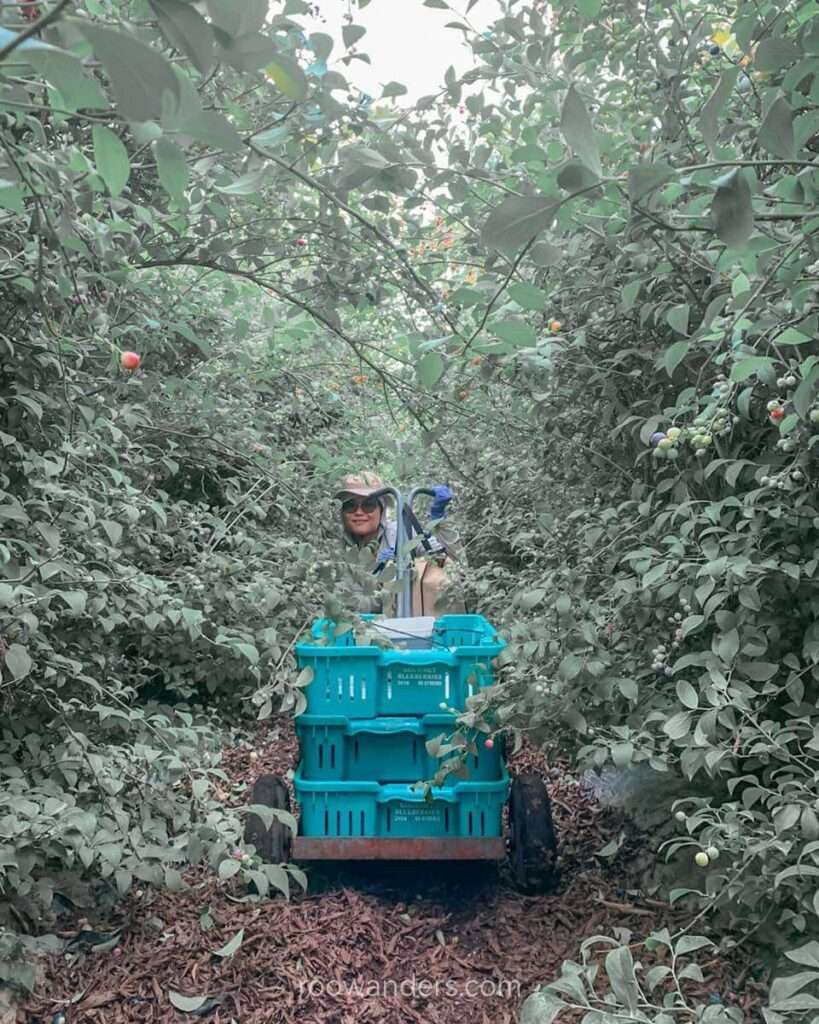
However, as it was still the beginning of the kiwi and apple harvest season, we reckoned there would be days with insufficient fruits to pick or pack. And that meant days without work or days with less than optimal working hours. Most importantly, we were curious about blueberry picking and Gourmet’s lucrative bonus programme.
My Short Tenure
My days working as a blueberry picker were short-lived, but it was well worth the experience.
We had a friend already working in Gourmet, and we wanted to claim a NZ$100 referral reward scheme that Gourmet rolled out. But a day into the job, we realised that Gourmet does not pay workers who have worked for less than three weeks for public holidays! And there were two around the corner – Good Friday and Easter Monday.
And so we packed our bags and left for kiwi after three days, NZ$100+ richer of course.
Gourmet likes to have bonuses to encourage its workers, and they could range from short-term bonuses like extra wages when a picker exceeds the minimum daily pick rate, to long-term ones like the NZ$100 bonus. To qualify for the latter, the referee and two referrals have to pick at least 100 kg each.
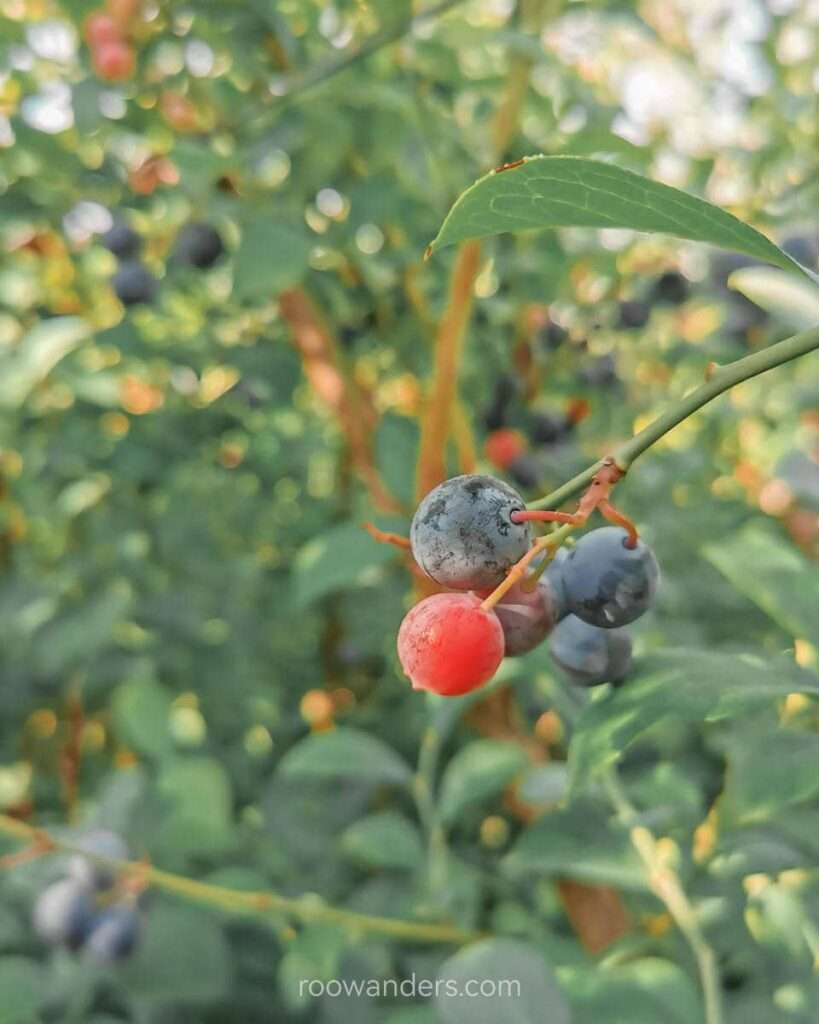
The Daily Grind
Hello Newcomer
As a newcomer, we were each given an ID card printed with our unique barcodes and photos during the induction. The card – conveniently attached to a lanyard – goes with us whenever we enter the orchards for picking.
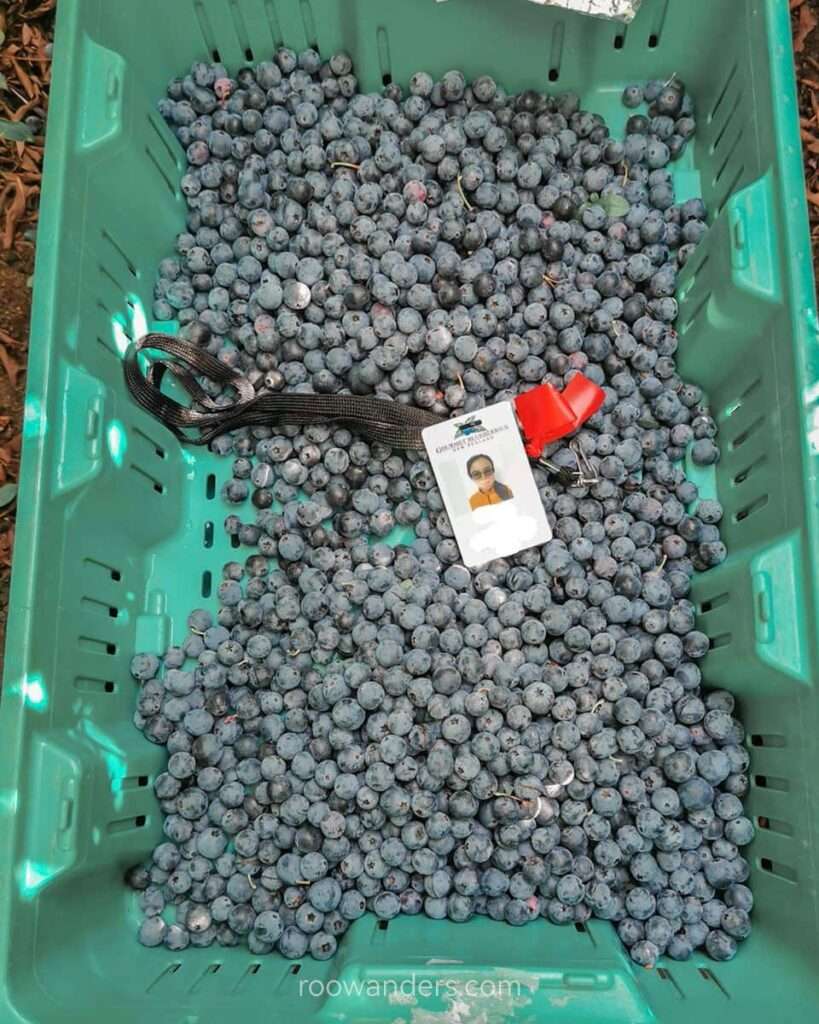
Pre-Orchard Protocol
Before entering the orchard, we have to collect a small wooden stool, a plastic container (like an ice cream box) with a string looped around it, another plastic container that fits into the former, and a reflection sheet.
As we collect those items, a supervisor would whip out a scanner and beep our cards. That logs our entry time in the orchard. The same procedure but in reverse happens again at the end of the day to log us out.
Gourmet is expansive with many orchards. Some pickers may hop onto a bus to another orchard further away, or walk into the orchard by the collection booth.
In the Orchard
Once in the orchard, grab a trolley and fill it with two rows of baskets. The green – and cleaner – basket at the front is for collecting the berries. The old, and not so clean looking one, is placed closer to the picker for personal belongings and the wooden stool.
We then rolled the trolley to our designated area for picking.
Each picker has a colour code. Newcomers have orange ribbons tied to their lanyards. One week into their roles and the orange would be exchanged for red. These would later be upgraded into other colours, depending on the picking pace of the pickers.
At the designated area, another supervisor ushered us into a row of berries. The supervisor scanned our cards, sprayed disinfectant on our hands, and picking began by pushing the trolley down the row of berry trees.
Picking the Blueberries
We were taught to pick from bottom to top. It was easy to pick fruits within reach. For fruits beyond our reach, we leveraged the wooden stool by stacking it on the ‘personal belonging’ basket.
Once a punnet of berries is filled – roughly defined as the empty plastic container – it is emptied into the green basket. Four punnets make for a completed basket, and a picker may call for a runner to fetch the basket, or have another empty basket stacked over it until the picker is done with the row. The reflection sheet layered over the berries protects them from dirt and the sun.
For each green basket of blueberries, the supervisor logs that information into the system through the picker’s ID card. The picker would also receive a printed copy of the amount the picker picked, which can be reviewed again on payday.
Breaks
There are no calls for smoko or lunch breaks, and we choose when and where to rest.
We could even choose to start work any time, as long as it was before the cut-off time of around 1 pm. Picking ends between 4.30 pm – 5 pm or when the designated area has run out of rows for picking.
Efficiency
We are paid based on efficiency. To meet the minimum wage, a picker must pick at least 5 kg of berries per hour. Going beyond that meant more money as this is a contract job. Failure to do so would lead to dismissal in the long run.
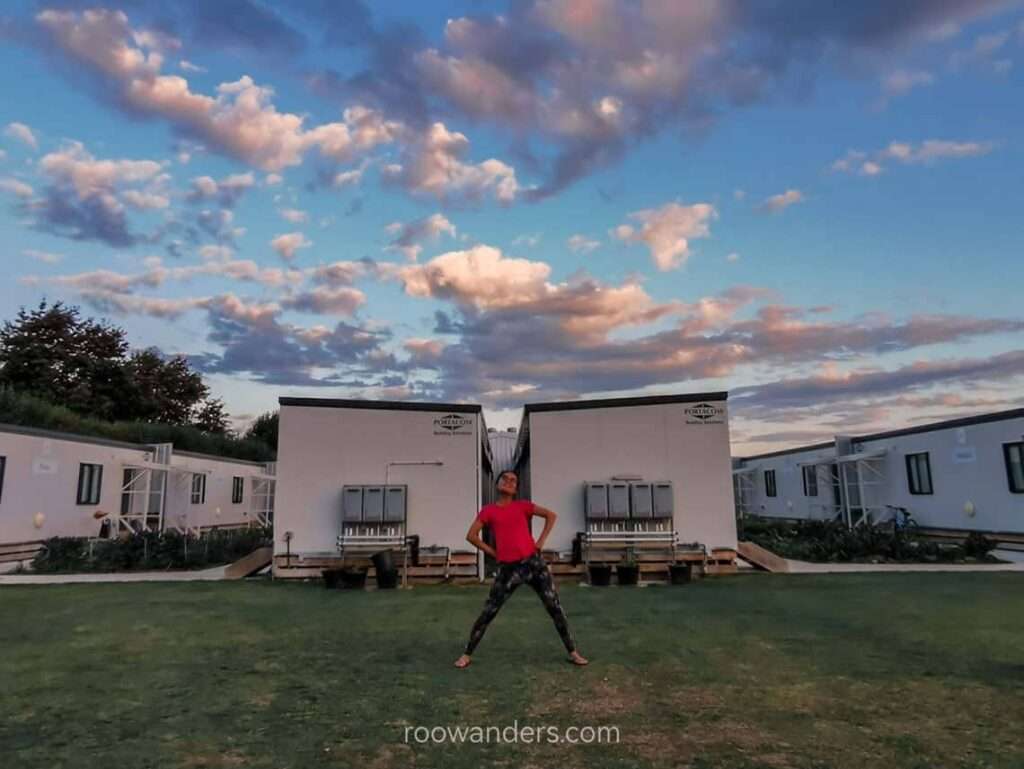
The Orchard’s Accommodation
Gourmet has three groups of lodgings for their staff. We were shown to the second cluster, about 15 mins walk, or 2 mins drive away from the main orchard.
Approximately 100 workers live in one cluster. There are ten containers lined beside a communal dining area and kitchen. Each container is subdivided into five rooms, and each room has two bunk beds. A curtain drawn between the corridor and individual rooms provides some privacy.
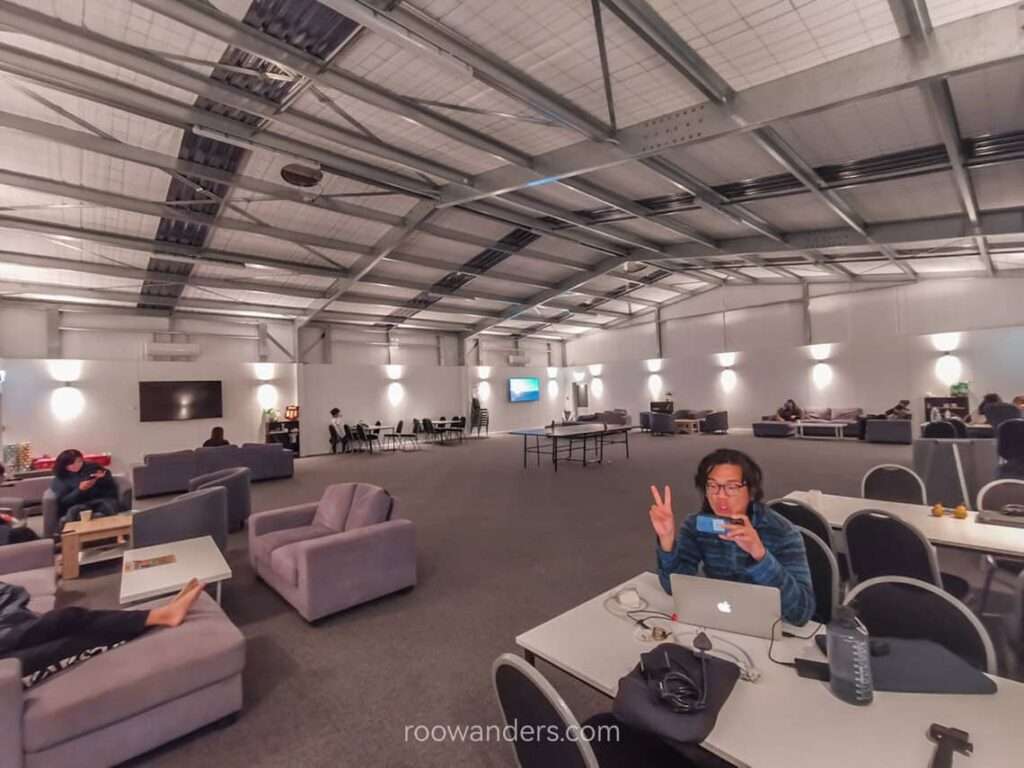
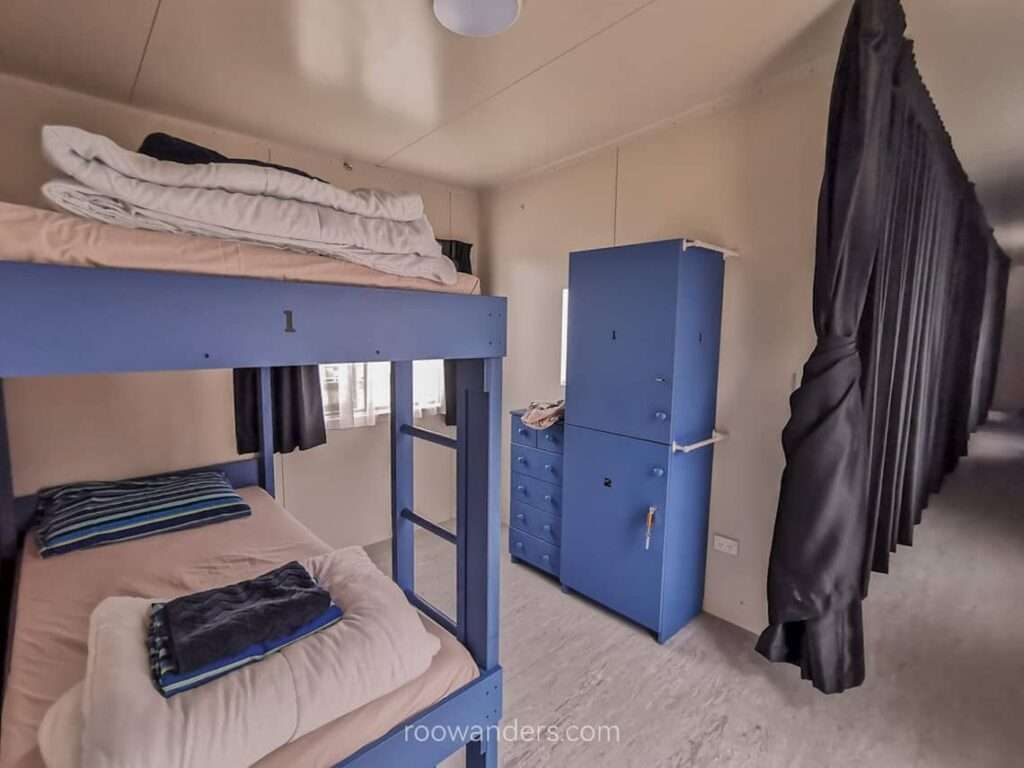
The communal dining area is situated in the centre of the cluster. Five BBQ pits and two stoves in the middle form a T-shape with benches scattered on both sides. At the top part of the open communal area is the kitchen with basic utensils, ten fridges, four stoves and shelves. A row of washing machines, dryers and freezers are located at the other end of the communal dining area. Laundry services are free.
Communal toilets and shower areas are located behind the kitchen in four containers. Each container has five to six cubicles.
Beyond the communal dining area is an entertainment hall where most workers congregate at the end of the day or during workless rainy afternoons. Two television sets adorned one side of the wall, while tables, chairs and a few sofas filled up the rest. There is wifi in the hall, but you know how it goes when everyone’s not working.
As we came into Gourmet at a time when most workers have moved on to the kiwi season, the occupancy rate in our cluster was comfortably low. There was no mad rush or squeeze for the kitchen during mealtimes. You could imagine how packed the place would be during peak season with a full occupancy rate.
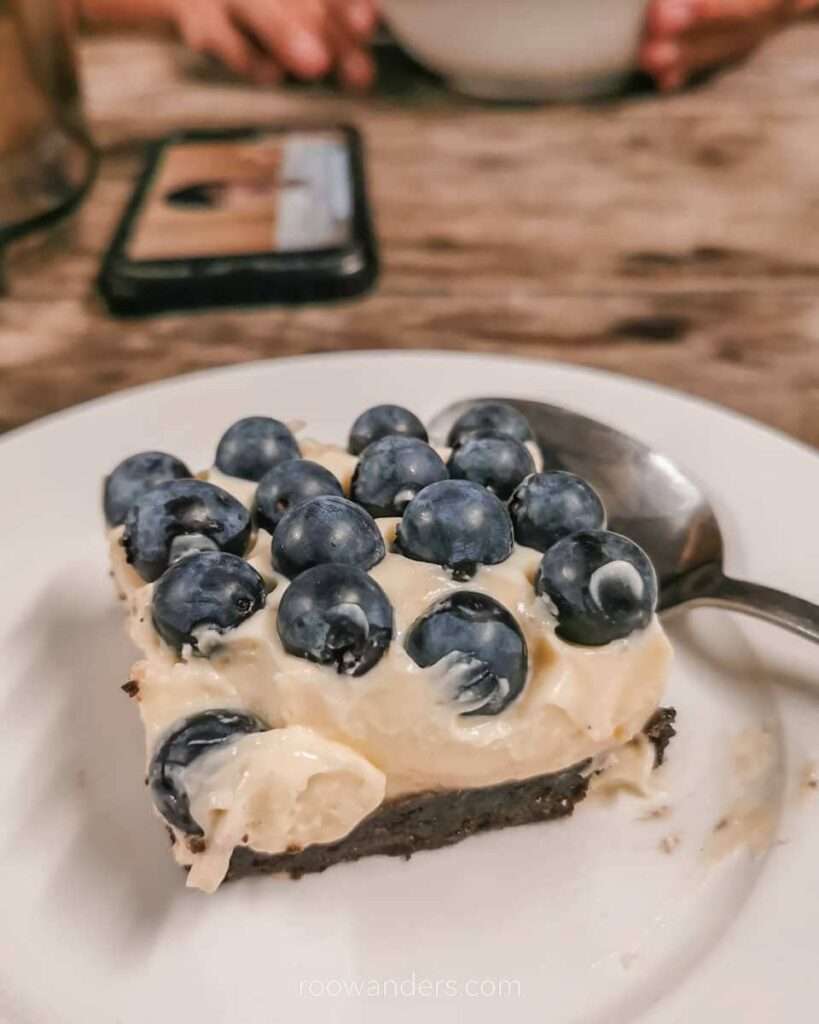
Takeaways
My tenure in Gourmet may be short, but it was a good experience to understand the effort put into a box of blueberries.
Blueberries are small and fragile. They cannot endure rough treatments like washing and brushing that are usually done on bigger fruits like kiwis or apples. The blueberries that the picker picks are as they are when they arrive on the shelves of the supermarket, which is why the picker’s hygiene is very important. Traces of peanut or other allergens may be rubbed onto the berries and can be dangerous to consumers with allergies.
There are many varieties of blueberries, but not all of them are sour. Some blueberries are perfect for jams, and some are best eaten fresh.
Blueberries with a hint of red are always sour unless they are of the Rahi varieties.
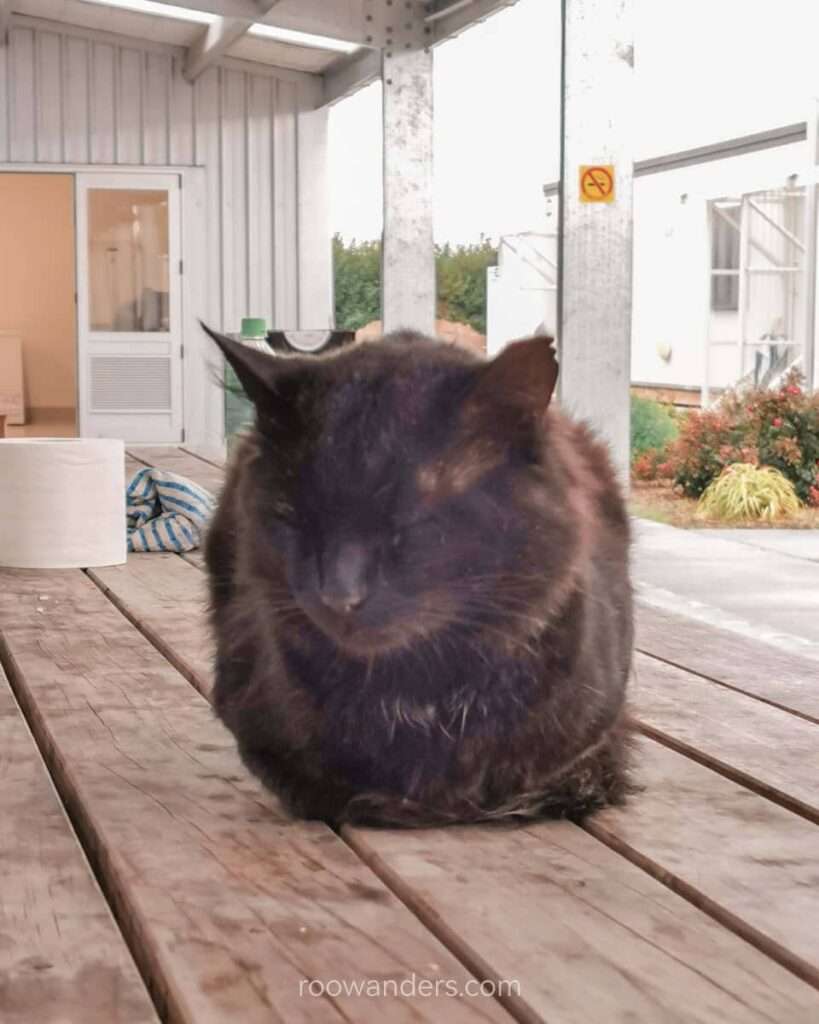
Ending
It took me three days to complete my first 100 kg of berries, which was decent for a novice. The next couple of days were spoiled by drizzles. Picking during rainy days is not only bad for our health but also bad for the fruit. Rain encourages fruit explosions, which leads to mouldy fruits.
Throughout the week, I had enjoyed myself very much. Picking is actually a therapeutic job, that is if you do not factor in the stress behind meeting the daily target. I had my fair share of the sweetest and plumpest berries while picking.
Hope you’ll get to experience what I experienced on your Working Holiday.
Still looking for more advice on the Working Holiday visa? Read this guide.
I would like to hear your comments below!





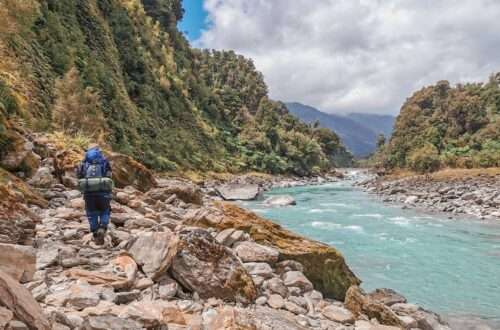
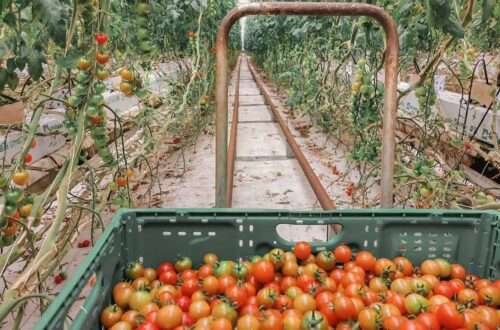

6 Comments
Shwe Yi
Hi, do we get to choose how long we want to work or is there duration requirement?
Roo
Hey hey! From what I recalled, there is no duration requirement. Read your employment contract to understand the notice period you have to serve before leaving. All the best!
Ivanno Bo
Good day!
We’re a group of friends 3 friends traveling together and we would like to know if there is any vacancy for us to work with you. We’re really excited with the idea of being part of the blueberry experience.
Looking forward hearing from you!
Roo
Hey hey, I’m not the employer. I’m just here posting my stories. You’ll have to click the link and speak to the people there. Good luck!
Guillermo Ciarrocca
Hola, estoy muy entusiasmado con tu paso y experiencia trabajando en las blueberrys, seria de enorme agrado si podrias compartir el contacto del empleo, actualmente estoy en Nueva Zelanda con mi pareja, ambos con visa valida para trabajar durante un anio y nos encantaria vivir esta experincia.
Roo
Hola, lo siento mucho, pero no soy bueno en español, así que escribiré en inglés aquí
There are several places to go for blueberry picking in NZ. The one I went is with Gourmet Blueberries, which you can find in the post above. All the best in your job search!